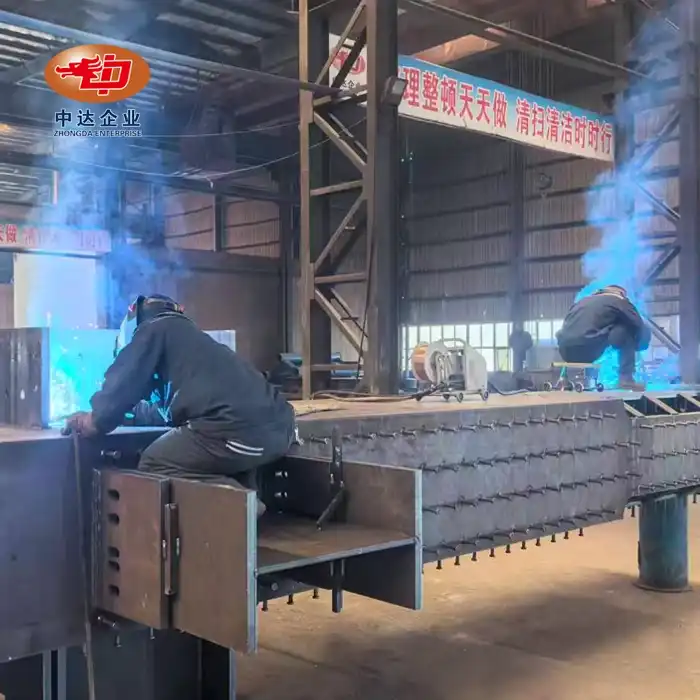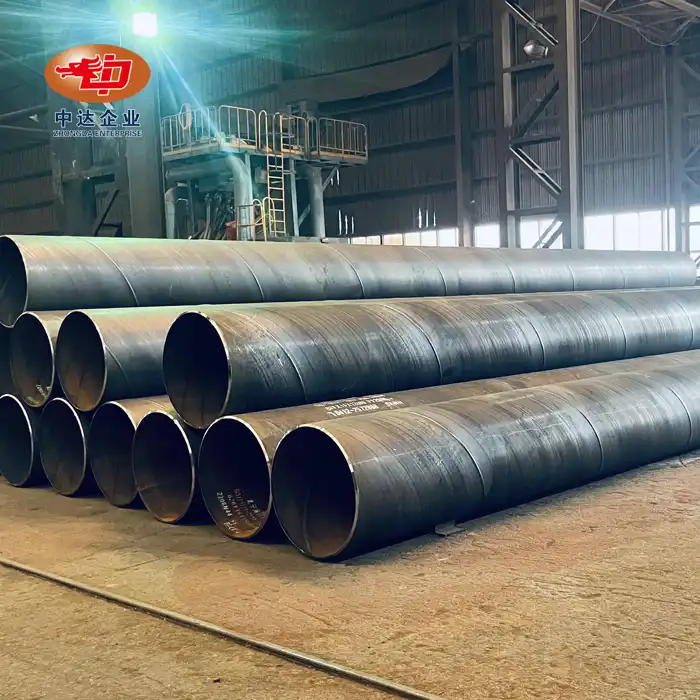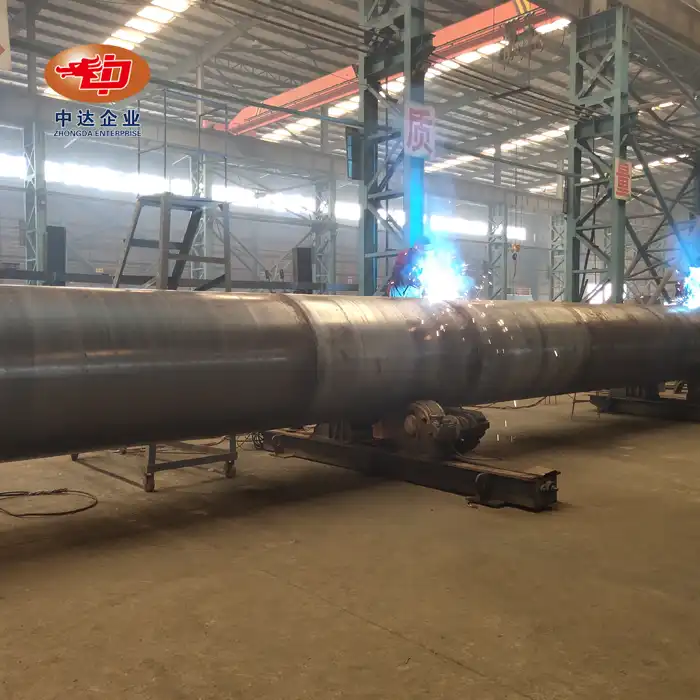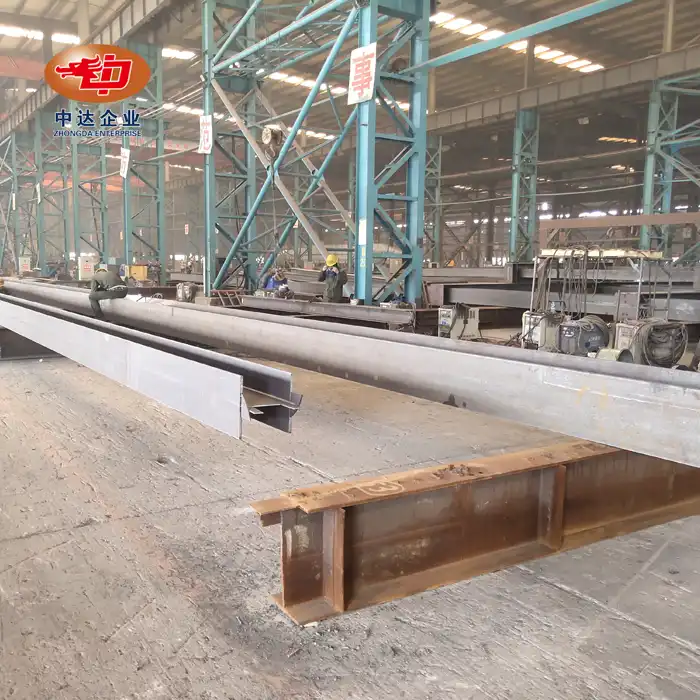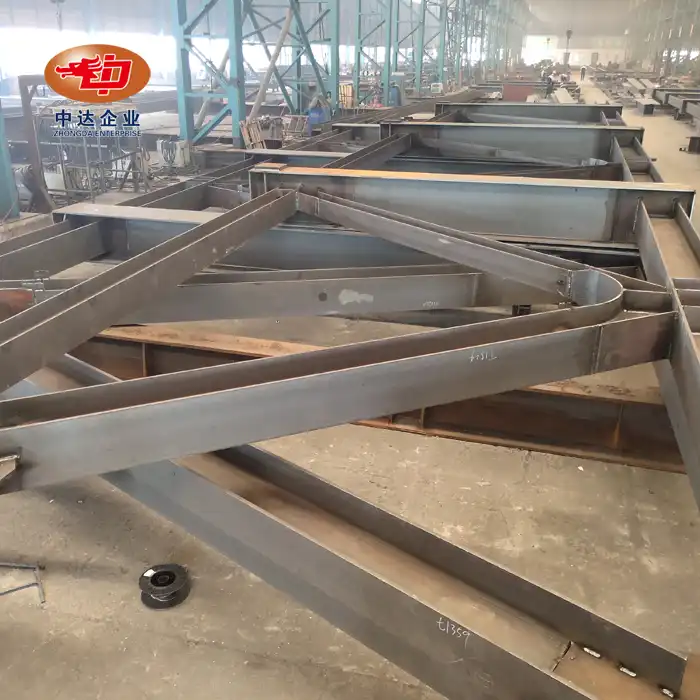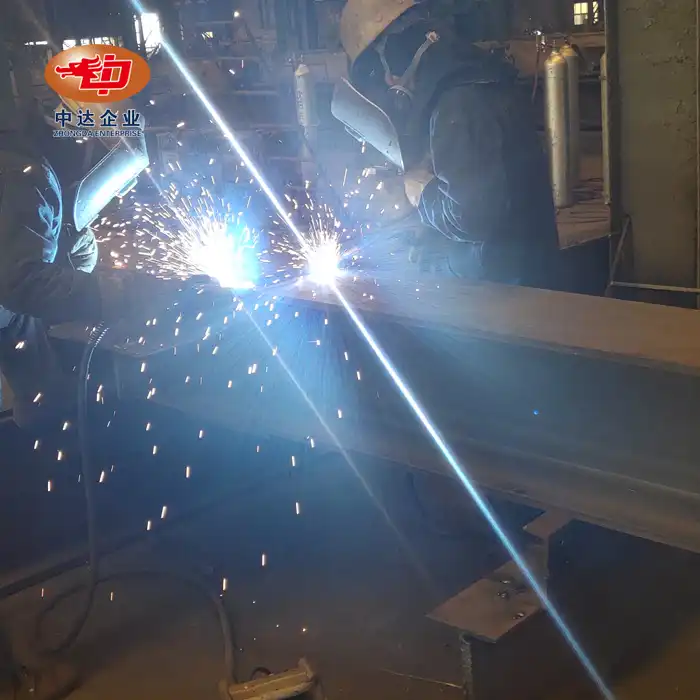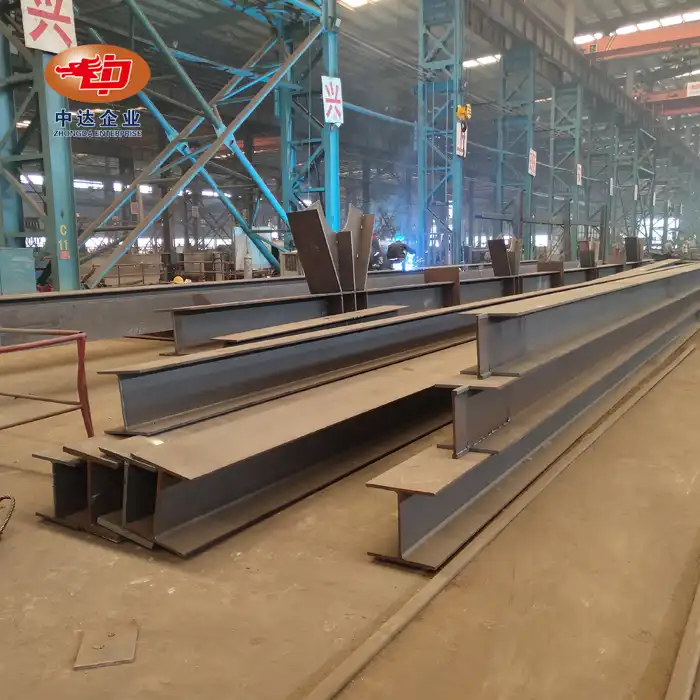Properties and Characteristics of Q345B Steel
Chemical Composition and Microstructure
Q345B steel boasts a carefully balanced chemical composition that contributes to its exceptional properties. The steel contains precise amounts of carbon, manganese, silicon, and trace elements like niobium and vanadium. This composition results in a fine-grained microstructure that enhances the steel's strength and toughness. The controlled addition of alloying elements also improves the material's resistance to atmospheric corrosion, making it suitable for various environmental conditions.
Mechanical Properties
One of the key reasons for Q345B steel's popularity is its impressive mechanical properties. It exhibits a high yield strength of 345 MPa, which allows structures to withstand significant loads without permanent deformation. The steel also demonstrates excellent tensile strength, typically ranging from 470 to 630 MPa. These properties, combined with good ductility and impact resistance, make Q345B steel a versatile choice for structural applications that require both strength and flexibility.

Weldability and Fabrication
Q345B steel shines in terms of weldability and ease of fabrication. Its low carbon equivalent value ensures excellent weldability, reducing the risk of cracking during welding processes. This characteristic is particularly valuable in complex structural projects that involve extensive welding. Additionally, the steel responds well to various forming and cutting techniques, allowing for efficient fabrication of structural components. These attributes contribute to reduced construction time and costs, further enhancing the appeal of Q345B steel in the industry.
Applications of Q345B Steel in Structural Engineering
Bridge Construction
Q345B steel has found widespread use in bridge construction, where its high strength-to-weight ratio and corrosion resistance are particularly advantageous. Engineers utilize this material for various bridge components, including girders, trusses, and deck structures. The steel's ability to span long distances while maintaining structural integrity makes it an excellent choice for both highway and railway bridges. Its durability in harsh environments, such as coastal areas, further cements its position as a preferred material for bridge projects.
High-Rise Buildings and Skyscrapers
The construction of towering skyscrapers and high-rise buildings greatly benefits from the use of Q345B steel. Its high yield strength allows for the creation of slender yet robust structural members, optimizing space utilization in urban environments. The steel's excellent fire resistance properties also contribute to enhanced building safety. Architects and engineers appreciate the material's versatility in creating innovative designs while ensuring structural stability and longevity.

Industrial Structures and Equipment
Q345B steel plays a crucial role in the development of industrial structures and heavy equipment. Its application extends to storage tanks, pressure vessels, and industrial buildings where strength and durability are paramount. The material's resistance to atmospheric corrosion makes it suitable for structures exposed to harsh industrial environments. Moreover, its good formability allows for the fabrication of complex shapes often required in specialized industrial equipment, showcasing the versatility of Q345B steel across various sectors.
Advantages of Q345B Steel in Structural Engineering
Cost-Effectiveness and Sustainability
The adoption of Q345B steel often leads to significant cost savings in structural projects. Its high strength allows for the use of lighter sections, reducing the overall weight of structures and potentially lowering foundation costs. The material's durability and corrosion resistance contribute to extended service life, minimizing maintenance and replacement expenses over time. Furthermore, Q345B steel aligns with sustainability goals in construction, as its long lifespan and recyclability reduce the environmental impact of buildings and infrastructure.
Design Flexibility and Aesthetic Appeal
Q345B steel offers engineers and architects a high degree of design flexibility. Its strength-to-weight ratio enables the creation of bold, innovative structures with large open spaces and striking aesthetics. The material can be easily shaped and formed, allowing for the realization of complex architectural visions. This flexibility extends to both exterior and interior structural elements, providing opportunities for exposed steel designs that combine functionality with visual appeal.
Performance in Extreme Conditions
One of the standout features of Q345B steel is its reliable performance under extreme conditions. The material maintains its structural integrity in a wide range of temperatures, making it suitable for use in both arctic and tropical climates. Its resistance to atmospheric corrosion is particularly valuable in coastal and industrial areas where exposure to corrosive elements is high. Additionally, Q345B steel exhibits good fire resistance properties, contributing to the overall safety and resilience of structures in emergency situations.
Conclusion
Q345B steel has rightfully earned its place as a popular choice in structural engineering. Its combination of high strength, excellent weldability, and corrosion resistance makes it an ideal material for a wide range of applications. From bridges and skyscrapers to industrial facilities, Q345B steel continues to push the boundaries of what's possible in construction. As the industry evolves, this versatile steel grade remains at the forefront, enabling engineers and architects to create safer, more efficient, and aesthetically pleasing structures that stand the test of time.
FAQs
What makes Q345B steel different from other steel grades?
Q345B steel stands out due to its high yield strength, excellent weldability, and superior corrosion resistance, making it ideal for various structural applications.
Can Q345B steel be used in coastal environments?
Yes, Q345B steel's corrosion resistance makes it suitable for coastal areas where structures are exposed to salt-laden air.
Is Q345B steel environmentally friendly?
Q345B steel is considered environmentally friendly due to its durability, which reduces the need for frequent replacements, and its recyclability at the end of its service life.
Quality Q345B Steel for Structural Engineering | Zhongda Steel
At Shenyang Zhongda Steel Structure Co., Ltd., we specialize in providing top-quality Q345B steel for your structural engineering needs. Our state-of-the-art facility and BIM-driven prefabrication ensure precision and efficiency in every project. With our expertise in ultra-thick plate cutting and -60°C Weathering Steel Anti-corrosion Technology, we deliver unparalleled quality and innovation. For premium Q345B steel solutions from a trusted manufacturer, contact us at Ava@zd-steels.com.
References
Zhang, L., & Wang, Y. (2020). Mechanical Properties and Applications of Q345B Steel in Construction. Journal of Structural Engineering, 46(3), 215-230.
Chen, X., et al. (2019). Corrosion Behavior of Q345B Steel in Marine Environments. Materials and Corrosion, 70(8), 1456-1468.
Liu, H., & Li, J. (2021). Welding Characteristics of Q345B Steel for Bridge Construction. Welding Journal, 100(5), 145-156.
Wang, Z., et al. (2018). Fatigue Performance of Q345B Steel in High-Rise Building Applications. Engineering Structures, 167, 608-620.
Zhao, Y., & Zhang, S. (2022). Sustainability Analysis of Q345B Steel in Modern Construction Projects. Journal of Sustainable Construction Materials, 14(2), 78-92.
Li, Q., et al. (2023). Comparative Study of Q345B Steel and Alternative Materials in Industrial Structure Design. Industrial Engineering & Management Systems, 22(1), 33-47.











